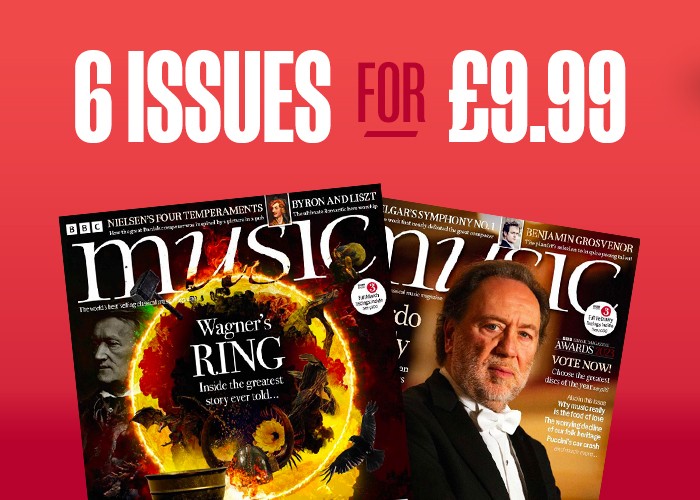What is a concerto grosso?
This musical form was popular in Baroque times, and at different times since. But what exactly is a concerto grosso and which composers have used the form?

What is a concerto grosso in music?
A concerto grosso (or concerti grossi, in the plural) was a common form of orchestral music during the Baroque era of music, around 1600-1750), although the form has been revisited by other composers since, particularly during the Neoclassical period.
The concerto grosso is most notable for the contrast it presents between a small group of soloists (often known as the concertino) and an accompanying full orchestra (the ripieno).
What instruments play in a concerto grosso?
The concertino part of the concerto grosso was typically performed as a trio sonata, a widespread chamber music genre during this time. Essentially, this involved two violins and one continuo (made up of a bass instrument such as a cello, and a harmony instrument – a harpsichord, for example. Wind instruments were also common: flutes or oboes might replace the violins. Meanwhile, the ripieno part was typically a string orchestra, once again with continuo and perhaps supported by brass or woodwind instruments.
Often, early concerti grossi would be given names that indicated where they were designed to be performed. Hence, a concerto da chiesa ('church concerto') was designed for performance in ecclesiastical surroundings, while a concerto da camera ('chamber concerto') would have been played at a royal or ducal court. Of the two, the secular world was ultimately where the concerto grosso form would blossom.
What's the difference between a concerto and a concerto grosso?
A concerto typically involves a solo instrument performing with, or sometimes against, an orchestral accompaniment. The most popular instruments for concertos (or concerti) are the piano and violin, although other instruments such as the cello, oboe, trumpet, clarinet and viola have had many wonderful concerti written for them.
Which composers wrote a concerto grosso?
The concerto grosso form enjoyed its peak in popularity during the Baroque era (roughly 1600 to 1750). At that time, some notable composers including Arcangelo Corelli, Pietro Locatelli and Antonio Vivaldi employed the form. Corelli's 12 Concerti Grossi are justly famous: they are all absolutely delightful, and did much to set the mould of the concerto grosso that other composers could follow. The concertino element in these concerti consists of two violins and a cello.
In fact, Corelli's Concerti Grossi were not published until some decades after they were composed. When they finally did appear, they had a big impact, making the concerto grosso form popular and causing many composers – particularly in Germany and England – to follow where Corelli had led. For example, in 1739 Georg Frideric Handel paid Corelli the ultimate tribute with his own set of 12 Concerti Grossi.
Elsewhere on the site we've looked at the best recordings of Corelli's Concerti Grossi. You'll find some wonderful versions here, all richly deserving of the title of a Corelli Concerti Grossi best recording.
However, the form enjoyed something of a renaissance in the 20th century, as part of the Neoclassical movement - a wider resurgence in the forms and idioms of the Classical period of music (roughly 1750 to 1820), as typified by composers such as Haydn and Mozart.
Various 20th century composers including Ernest Bloch, Vincent d'Indy and Bohuslav Martinů all composed concerti grossi. We think the marvellous Bloch Concerto Grosso No.1 is an absolute winner, and the Martinů Concerto Grosso is certainly not far behind.
Five concerto grosso discs to try
Corelli: 12 Concerti Grossi
Roy Goodman (director) / The Brandenburg Consort
Hyperion CDD 22011
'The Brandenburg Consort’s 1992 recording is directed with grace and panache by violinist Roy Goodman,' says our reviewer Kate Bolton-Porciatti. 'His 19 players offer refined performances, tempos are sensitively judged and dance movements are delightfully lithe. The continuo realisations on organ or harpsichord and archlute add variegated colours and textures.'
Handel: 6 Concerti Grossi, Op.3
Georg Kallweit / Akademie für Alte Musik Berlin
Pentatone PTC 5186 776
'No two concertos of the set are identically scored and Handel’s imaginative deployment of woodwind is, perhaps, especially beguiling.,' says our reviewer Nicholas Anderson of this recording of Handel's earlier Opus 3 concerti grossi.
Bloch: Concerti Grossi 1 & 2
Dalia Atlas / Atlas Camerata
ASV
Wonderful, tangy interpretations of the concerto grosso form, with (in No.1 in particular) Bloch's distinctive Jewish soundscape in full flow.
Martinu: Concerto Grosso, etcetera
Ondrej Kukal / Prague Chamber Orchestra
Supraphon SU3958-2
Simply a wonderful disc of Martinů works for small orchestra. It features his exuberant Sinfonietta La Jolla (effectively a chamber symphony with piano obbligato) as well as the lively Toccata e Due Canzoni and the beautifully crafted Concerto Grosso. All are delivered in scintillating performances by the Prague Chamber Orchestra, who (excuse the cliché) have this music in their blood.
Tamberg: Concerto Grosso, etcetera
Neeme Järvi / Residentie Orkest Den Haag
BIS
Eino Tamberg (1930-2010) was an Estonian composer of operas, symphonies, and concertos. His Concerto Grosso is a wonderful synthesis of tightly sprung Classical forms and modern harmonic adventurousness. Here it gets a beautiful performance, with fellow Estonian Neeme Järvi waving the baton.
Authors

Steve has been an avid listener of classical music since childhood, and now contributes a variety of features to BBC Music’s magazine and website. He started writing about music as Arts Editor of an Oxford University student newspaper and has continued ever since, serving as Arts Editor on various magazines.




